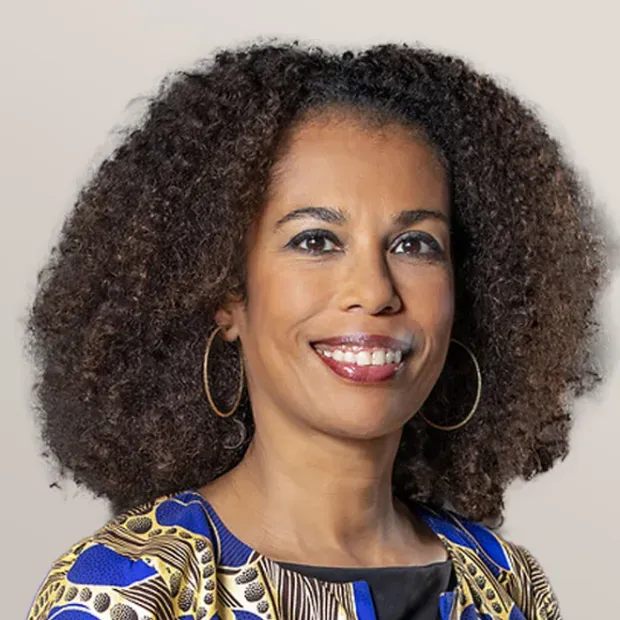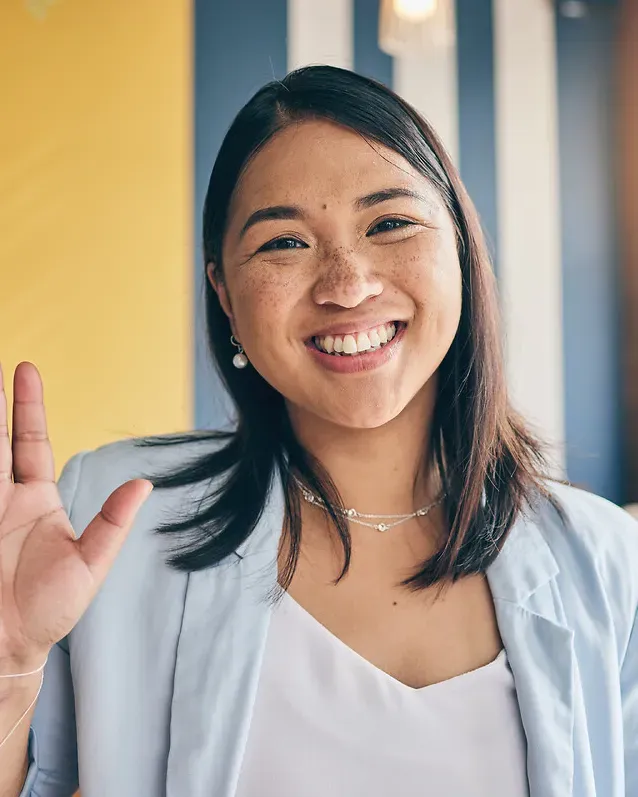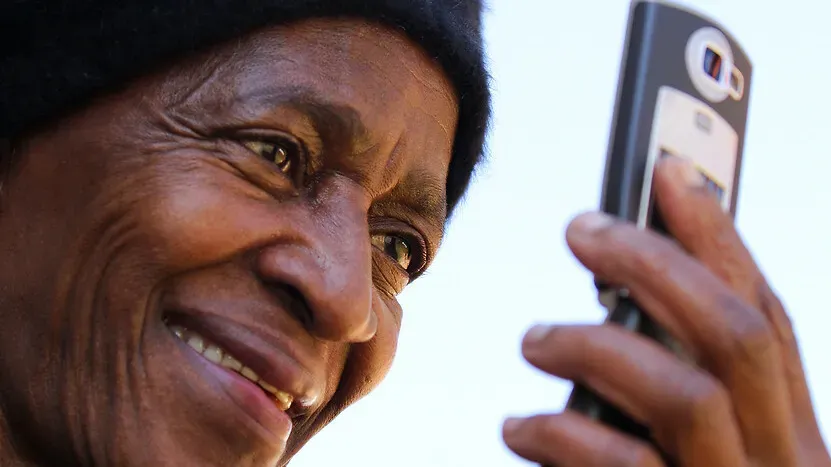Training that transforms
the world of work
We are committed to raising awareness and training 6 million people in digital skills by 2030, an ambitious goal set out in our Lead the Future strategic plan. In a world where digital skills are becoming essential for employability, our programs are open to everyone: young people with or without a degree, people changing careers and aspiring entrepreneurs.
Our hands-on training covers the most in-demand skills in today’s digital careers — from web and mobile development to cybersecurity, AI and cloud computing — with many leading to industry-recognized certifications.
This commitment translates into concrete partnerships, such as our collaboration with Coursera and the Amazon Web Services re/Start program, which provide high-quality certification pathways aligned with labor-market needs.
In Africa and the Middle East, they help thousands of young people, women and entrepreneurs build skills for the future, access new opportunities and drive their countries’ digital transformation.
Training that transforms
the world of work
In Africa and the Middle East, they help thousands of young people, women and entrepreneurs build skills for the future, access new opportunities and drive their countries’ digital transformation.
We are committed to raising awareness and training 6 million people in digital skills by 2030, an ambitious goal set out in our Lead the Future strategic plan. In a world where digital skills are becoming essential for employability, our programs are open to everyone: young people with or without a degree, people changing careers and aspiring entrepreneurs. Our hands-on training covers the most in-demand skills in today’s digital careers — from web and mobile development to cybersecurity, AI and cloud computing — with many leading to industry-recognized certifications. This commitment translates into concrete partnerships, such as our collaboration with Coursera and the Amazon Web Services re/Start program, which provide high-quality certification pathways aligned with labor-market needs.
people trained free of charge in our Orange Digital Centers in Africa, the Middle East and Europe since 2021
of attendees to our free training programs lasting more than three months find a job or pursue further studies within six months
jobs in sub-Saharan Africa will require digital skills by 2030
Orange Digital Centers,
catalyzing innovation
The Orange Digital Centers (ODCs) are a cornerstone of our strategy to promote entrepreneurship and support access to employment. Free and open to all, these spaces provide a complete ecosystem dedicated to innovation and business creation.
Operating in 24 countries across Europe, Africa and the Middle East, the ODCs bring together under one roof : a coding school offering practical, career-focused training, a FabLab for prototyping innovative projects, an Orange Fab accelerator that helps startups grow, access to Orange Ventures, our €350 million investment fund.
Each Orange Digital Center works hand in hand with universities, local businesses and public institutions to create a vibrant ecosystem that fuels innovation. Across Africa and the Middle East, 156 partner universities currently take part in the program, allowing us to reach a wide audience of students and young entrepreneurs.
Orange Digital Center reflects our belief that digital technology must be a force for positive innovation. The goal is to train young people — with or without degrees — in digital skills, and encourage them to create their own startups. We want them to be active participants in their country's digital transformation

Orange Digital Centers,
catalyzing innovation
Orange Digital Center reflects our belief that digital technology must be a force for positive innovation. The goal is to train young people — with or without degrees — in digital skills, and encourage them to create their own startups. We want them to be active participants in their country's digital transformation

The Orange Digital Centers (ODCs) are a cornerstone of our strategy to promote entrepreneurship and support access to employment. Free and open to all, these spaces provide a complete ecosystem dedicated to innovation and business creation. Operating in 24 countries across Europe, Africa and the Middle East, the ODCs bring together under one roof : a coding school offering practical, career-focused training, a FabLab for prototyping innovative projects, an Orange Fab accelerator that helps startups grow, access to Orange Ventures, our €350 million investment fund. Each Orange Digital Center works hand in hand with universities, local businesses and public institutions to create a vibrant ecosystem that fuels innovation. Across Africa and the Middle East, 156 partner universities currently take part in the program, allowing us to reach a wide audience of students and young entrepreneurs.
Promoting women’s advancement
in the digital sector
We firmly believe that diversity of talent strengthens the entrepreneurial ecosystem. That’s why we’ve developed programs specifically designed to support women in tech.
Launched in 2018, our Women Entrepreneurs acceleration program helps female founders and co-founders of tech and Tech for Good startups to achieve business growth in France and internationally.
This program, the only one of its kind in France, has already supported more than 700 women entrepreneurs across mainland France and several overseas regions.
Each year, 100 women entrepreneurs selected for the program receive personalized support, including: Business-focused visibility and networking opportunities, Mentoring and expert guidance from Orange employees, "Masterclass" on developing strategic vision, Financing support.
The results speak for themselves: 95% of the startups supported are still active, far above the national average, demonstrating the long-term impact of the program. In addition, our Hello Women program, deployed in more than 20 countries since 2022, encourages women to pursue technical and digital careers. Its purpose is to help diversify the talent pipeline and enrich the broader tech ecosystem.
We want to strengthen employability by supporting the development of career paths in digital technology. That is the purpose of our Hello Women program, deployed in over 20 countries since 2022.
Promoting women’s advancement
in the digital sector
We want to strengthen employability by supporting the development of career paths in digital technology. That is the purpose of our Hello Women program, deployed in over 20 countries since 2022.
We firmly believe that diversity of talent strengthens the entrepreneurial ecosystem. That’s why we’ve developed programs specifically designed to support women in tech. Launched in 2018, our Women Entrepreneurs acceleration program helps female founders and co-founders of tech and Tech for Good startups to achieve business growth in France and internationally. This program, the only one of its kind in France, has already supported more than 700 women entrepreneurs across mainland France and several overseas regions. Each year, 100 women entrepreneurs selected for the program receive personalized support, including: Business-focused visibility and networking opportunities, Mentoring and expert guidance from Orange employees, "Masterclass" on developing strategic vision, Financing support. The results speak for themselves: 95% of the startups supported are still active, far above the national average, demonstrating the long-term impact of the program. In addition, our Hello Women program, deployed in more than 20 countries since 2022, encourages women to pursue technical and digital careers. Its purpose is to help diversify the talent pipeline and enrich the broader tech ecosystem.

POESAM
accelerating positive-impact startups
The Orange Social Venture Prize in Africa and the Middle East (POESAM) recognizes and supports innovative projects that leverage new technologies to address social and environmental challenges.
Open to startups from 17 countries, this flagship competition takes place in two phases: national contests followed by an International Grand Prize. Since 2020, we’ve also awarded the International Women’s Prize to celebrate and support initiatives led by women entrepreneurs.
The winners receive significant financial support: €25,000 for the first International Prize, €15,000 for the second and €10,000 for the third, with the winner of the Women’s Prize receiving €20,000. In addition to the financial award, winners also receive guidance through the Orange Digital Centers to help them expand their businesses internationally.
For fifteen years, POESAM has identified the new talent shaping Africa and the Middle East. Through the Orange Digital Centers network, winners receive personalized support to scale their projects and access new markets. By supporting high-impact startups, and especially women innovators, we make digital technology a lever for inclusion, empowerment and sustainable development
POESAM
accelerating positive-impact startups
For fifteen years, POESAM has identified the new talent shaping Africa and the Middle East. Through the Orange Digital Centers network, winners receive personalized support to scale their projects and access new markets. By supporting high-impact startups, and especially women innovators, we make digital technology a lever for inclusion, empowerment and sustainable development
The Orange Social Venture Prize in Africa and the Middle East (POESAM) recognizes and supports innovative projects that leverage new technologies to address social and environmental challenges. Open to startups from 17 countries, this flagship competition takes place in two phases: national contests followed by an International Grand Prize. Since 2020, we’ve also awarded the International Women’s Prize to celebrate and support initiatives led by women entrepreneurs. The winners receive significant financial support: €25,000 for the first International Prize, €15,000 for the second and €10,000 for the third, with the winner of the Women’s Prize receiving €20,000. In addition to the financial award, winners also receive guidance through the Orange Digital Centers to help them expand their businesses internationally.
Through Orange Ventures, our €350 million investment fund, we support innovative startups at every stage of their development, from seed to maturity.
Orange Ventures invests in strategic areas like connectivity, cybersecurity, AI and innovative financial services, as well as high-impact sectors including digital health, climate innovation and the circular economy.
In 2024, Orange Ventures and Digital Africa strengthened their partnership by co-investing in startups from within the Orange Digital Centers network in Africa and the Middle East. This initiative reflects our commitment to accelerating the growth of African startups and helping build a stronger local entrepreneurial ecosystem.


Our connectivity network extends beyond urban areas to reach rural regions, providing the same digital opportunities found in cities and fostering conditions for new business models to emerge in these areas.
In France, we have deployed nearly 70% of all fiber connections nationwide and signed many Public Initiative Network agreements with local authorities to serve rural areas. These infrastructures help local entrepreneurs grow their businesses and remain competitive regardless of where they operate.
In Africa, the Middle East and Europe, our ODC Clubs — satellite Orange Digital Centers located in regional universities — extend the reach of our entrepreneurship programs beyond capital cities.
Orange Money also plays a critical role in rural entrepreneurship. Our financial-inclusion service enables millions of people, especially in rural areas, to make transactions directly from their mobile phone without needing a traditional bank account. This allows local merchants and entrepreneurs to receive payments, make money transfers, access micro-loans and grow their businesses — even in the most remote regions.
Orange, a catalyst for economic and social growth
By building digital skills, expanding access to financial services in Africa and supporting startups, we’re making a tangible impact across Europe, Africa and the Middle East.

Driving local economic growth
Our programs supporting national digital ecosystems create significant economic value. The proof: in countries such as Côte d’Ivoire and Senegal, the direct, indirect and downstream impact of our activities represents up to 11% of GDP.

Access to financial services
With Orange Money in 17 countries across Africa and the Middle East, we provide more than 100 million subscribers with access to mobile financial solutions, helping drive local entrepreneurship and facilitate commercial transactions.

Accelerating innovation
By connecting entrepreneurs with investors, markets and skills, we help accelerate the innovation cycle and bring solutions to market that meet local needs.

Supporting business longevity
Our Women Entrepreneurs program has a 95% business survival rate, far above the national average for startups, demonstrating the impact of our support on the long-term success of entrepreneurial projects.






